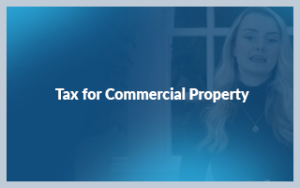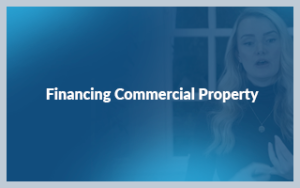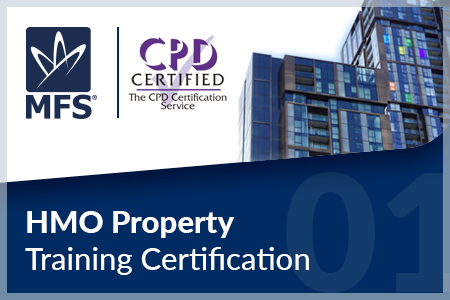CPD Training Course

Lesson Overview
Market Financial Solutions’ CPD credited Commercial Property training course is designed to be a valuable asset for brokers whose clients are actively involved in commercial property investment. This comprehensive training course provides brokers with a thorough understanding of the commercial property landscape, covering diverse building classifications, leasing options, valuation methods, legal obligations, and tax considerations that property owners may encounter.
Whether you’re starting out in the industry or have experience in the field, it serves as a guide to navigate the nuances of the commercial property market. Enhance your knowledge and gain insights to make more informed decisions.
Get your certificate and earn 1.5 structured CPD hours with this commercial property course.

Learning Objectives for This Commercial Property Course
- Define and identify commercial properties and how they differ from residential properties.
- Understand ownership structures and leasing options and how to differentiate between each option.
- Learn about regulatory responsibilities such as health and safety, fire safety, data protection, and EPC requirements.
- Highlight investment strategies, financing options, and market considerations.
- Outline tax implications, rates, exemptions, and structuring for Capital Gains Tax, Income Tax, and Stamp Duty.
Watch the Video
Welcome to Market Financial Solutions’ Commercial Property Training Certification! In this video, we’ll guide you through all the commercial know-how for supporting clients in property investment, while offering valuable insights on financing strategies to aid your success.
So, what is commercial property?
To put it simply, a commercial property is a building that is used for business purposes, and not as a domestic dwelling. Common examples include:
Offices
Retail units
Warehouses.
Commercial properties can come in a range of shapes and sizes, as this will depend on the needs and the size of the company in it.
For example, an office may need to be big enough to house hundreds of employees, whereas an automotive manufacturing plant may require several thousand square metres to produce vehicles.
It is also possible for both commercial and residential property to co-exist under one roof and share a title. These buildings are often referred to as mixed-use or semi-commercial properties. An example of this would be a flat located above a pub.
Commercial property usually falls within five core categories. These categories include various property types and uses, initially outlined in the 1987 Town and Country Planning (Uses Classes) Order
The first category is offices. Offices can work for businesses of any size, from small accounting firms to big FTSE100 Blue Chips. The size of offices usually varies based on the number of employees, amongst other factors.
Retail units are commercial properties used for sale of goods directly to customers. This could include retail businesses such as department stores, shopping centres that house them, and smaller shops.
Industrial property generally includes big warehouses and factories which are used for various business activities, such as making and developing goods, researching new technologies, and serving as wholesale warehouses and distribution centres.
Leisure property, as to be expected, encompasses buildings designed for recreational activities, often centred around services rather than physical products. Examples commonly include restaurants, pubs, hotels, cinemas, and gyms.
Finally, we have healthcare. which includes obvious examples such as hospitals and GP surgeries, but can also encompass nursing homes, pharmacies, clinics, and more.
Outside of these categories, you may also find “Sui Generis” properties. This phrase translates to “of its own kind” and covers properties/businesses that don’t typically fall into any of the previously defined categories. Petrol stations and laundrettes could be considered examples of this.
So, now you’ve heard about the types of commercial property, what types of ownership are available for commercial property?
All properties, including commercial properties, are usually freehold or leasehold.
With freehold, the investor owns the property and the land it’s built on, meaning they have exclusive ownership and can do with it as they will. However, with a leasehold, investors won’t own the land, but will have exclusive possession of the premises for a certain amount of time.
There are also several types of leasing options available that you may want to be aware of should your clients choose to invest via this route.
Gross leases
Short-term occupancies often use these, where business tenants pay a flat fee (or rent) for exclusive use of the property, and the freeholder and/or landlord includes their costs in the rent
Net leases
With net leases, the commercial tenant will pay some or all of the costs of the property on top of the rent. Typically, this includes taxes and ongoing utility bills. Net leases are split into three categories. They are single net leases, which require tenants to cover the property’s taxes while the landlord pays other costs, Double net leases, which is where the tenants will pay the property taxes and insurance costs, and finally triple net leases, which require the tenant to pay all the costs associated with the property on top of the rent.
Absolute leases
Similar to triple net leases, these place the vast majority of all the financial responsibilities onto the commercial tenant. Generally, the more costs a leaseholder covers, the more control and flexibility that they’ll have.
Percentage leases
With this type of lease, the rent is paid dependent on the business’s performance. An agreed percentage of the businesses gross sales will be added to the rent. Often a “breakpoint” will be included. This means that if the sales are below a certain threshold, only a base level of rent will be charged. With these leases, the agreement is usually tied to the success of the underlying business.
Sometimes, these leases may present themselves under different names. For example:
Gross leases can be referred to as full-service leases.
There are also modified gross leases, and absolute leases, which add further complication.
Before buying commercial property via a leasehold, your clients will need to make sure they fully understand what the lease involves and requires of them.
Now it’s time for a quickfire question! Test your knowledge of what you’ve learned so far by answering this question:
Which of the below best describes a commercial property? Is it
Any building used for business purposes
Any building used for business purposes, not as a domestic dwelling, or
A mixed-use property with both residential and business inside
The answer is A. A commercial property is described as any building used for business purposes.
As your clients may expect, buying commercial property generally comes with certain responsibilities by law *, most of these however, will likely be dependent on the lease involved.
Health and safety risk assessments must be carried out, with action being taken where any hazards are found. This usually involves fire safety, gas safety, electrical equipment safety, and managing asbestos. Business tenants will also be responsible for providing a reasonable temperature, enough space, ventilation and lighting, toilets and washing facilities, drinking water, and safe equipment.
*Guidance on these requirements can be found on the government’s website. Expert advice can also be sought.
Ensuring fire safety in a building is crucial, and responsibility should fall on those with control of the premises, be it the employer, owner, landlord, or occupier.
For commercial property clients using CCTV for asset protection, compliance with data protection laws is imperative. If they are planning to utilize CCTV, they must:
Display a sign informing people about the use of the CCTV and its purpose.
Provide recorded images within one calendar month to anyone captured.
Share images with authorities upon request, such as the police.
Retain images only as long as necessary for business needs.
Fulfil the data protection fee requirement.
Also, they must have an Energy Performance Certificate (EPC) if they rent out or sell a business premises. They’ll also be needed where buildings under construction are finished or where there are changes to the number of parts used for separate occupation and these changes involve providing or extending fixed heating, air conditioning or mechanical ventilation systems.
Currently commercial landlords must have a minimum EPC rating of ‘E’ unless they have a valid exemption. A list of valid exemptions can be found on the government’s website.
Let’s talk investing!
When it comes to buying commercial property, there will be many options available to your clients.
One common approach is direct investment, where your clients can buy a commercial property with the goal of earning a return. This can involve various strategies, such as renting the space to a business for income, selling the property for a profit, or converting it to target a different market. Clients will likely have different financing options available to them, including purchasing with cash, applying for a commercial Buy-to-Let (BTL) mortgage, or exploring bespoke solutions like bridging loans.
Beyond outright ownership of a physical building, your clients can explore direct and indirect commercial property funds. Direct funds, often known as bricks-and-mortar funds, enable individuals to invest in commercial property through collective investment schemes like unit trusts or Open-Ended Investment Companies (OEICs). These funds directly invest in a portfolio of commercial assets, such as manufacturing hubs and retail stores, which might otherwise be inaccessible to smaller investors. On the other hand, indirect property funds may offer an alternative by allowing clients to collectively gain exposure to the property market. These schemes invest in shares of publicly listed property firms, typically through vehicles like Real Estate Investment Funds (REITs).
Calculating the value of a commercial property
There are multiple ways to calculate the value of commercial property. Before making any investment, you should ensure your clients have considered the following:
Location of where they want to invest.
The local economy
The rental income potential, and
The size and condition of the property they’re looking at.
How they plan to invest and generate profit from their commercial property will likely affect the method of valuation used. Common valuation methods include:
The cost approach: This is a calculation of the approximate cost of a commercial property based on what it would cost to build a similar property on the same land.
This approach can be helpful for new commercial properties with limited sales data. The formula is: Property Value = Land Value + (Building Costs – Depreciation).
The sales comparison approach: This involves comparing a commercial property to similar assets in the area that have been sold.
After identifying these properties, your clients can then observe differences and adjust costs accordingly. For example, if they analyse three similar commercial buildings, the formula becomes: Property Value = (Building 1 + Building 2 + Building 3) / (Total Number of Buildings).
The gross rent multiplier (GRM) method: This method can be considered useful if the client is focused on income.
The GRM method indicates how long it takes to pay off a property based on its income. The formula is: GRM = Property Selling Price / Annual Gross Rental Income. A lower GRM suggests a potentially more profitable commercial property investment, giving an indication of when it will become profitable.
These are simple break downs of just some of the valuation methods available. Income capitalisation, value per door, and general income approach methods are also options.
To help get a complete picture of a commercial property’s value, professional valuation services should be utilised.
We’re back with another quickfire question, so test your knowledge again!
What is the purpose of displaying a sign when using CCTV for asset protection in a commercial property?
- To deter potential intruders
- To inform people about the use of CCTV and its purpose.
- To comply with fire safety regulations
You’re right! B is the correct answer for this one. CCTV signs should be displayed to inform people about the use of CCTV and it’s purpose
Now, lets move on to the next topic, tax
Commercial property is, generally, taxed differently than residential property, and some of the differences tend to be beneficial for property clients. Professional advice should be sought.
Capital Gains Tax (CGT), for instance, is often levied at a lower rate for commercial properties than residential properties. If your client is a basic rate taxpayer, selling as an individual, they should pay 10% capital gains tax on commercial property, whereas they’d likely pay 18% on residential property. For higher and additional rate taxpayers, it could rise to 20% for commercial assets, and 28% for residential assets.
If your clients sell their properties via a limited company, they’ll pay corporation tax instead of CGT, which is currently levied at 25%. Also, if their business is specifically to buy and sell property (developers for example) CGT won’t be due. Instead, they’ll pay income tax (if they’re sole trader or partner) or corporation tax.
Income tax is also likely to be paid by commercial landlord clients who receive income from tenants, Generally, individuals who receive an income from property are given a property allowance of £1,000. Also, people can receive an income of up to £12,570 before any income tax is levied – which is known as the personal allowance.
Beyond this, income between £12,571 and £50,270 is taxed at 20%. Income tax is paid at 40% between £50,271 and £125,140, and anything above £125,140 is taxed at 45%.
Stamp Duty Land Tax (SDLT) is also paid on increasing portions of the property price when £150,000 or more is paid for non-residential or mixed land or property. For freeholds sales, 2% is charged on the portion of the property worth between £150,001 and £250,000, with 5% levied on everything above £250,000.
For leasehold sales, 1% is charged on the net present value of rent on the portion of the property between £150,001 and £5,000,000. Above £5,000,000, it’s 2%.
Although taxes like VAT and council tax may not typically apply to these types of commercial interests, there are situations where they may be imposed. Property tax is a complex matter, so it’s advisable for clients to consult with a tax professional or accountant. These experts not only provide guidance on what taxes are owed and when but also assist in leveraging any applicable allowances or tax benefits.
Now for our final topic, financing commercial property.
Before buying commercial property, clients should at least be thinking about their financing options. While the option they go for will depend on the eventual property they buy, and their circumstances, it may help having an idea of what’s out there ahead of time.
Your clients may consider comparing current market rates for commercial mortgages and bridging loans or evaluate whether funding is needed for an auction purchase instead of buying through an agent. They should also research what market options are available, and which ones seem worthwhile in pursuing. This could start with the geographic location. Perhaps clients want to explore potential office demand in London, or leisure opportunities in Cardiff. They may also consider timeframes—whether the goal is securing long-term income or pursuing a fix-and-flip strategy for renovating an empty space.
Commercial mortgages may be the logical step for many, and these mortgages can help with investments in offices, shops, leisure centres and more.
Generally, these mortgages come in two main formats, capital repayment and interest only:
With capital repayment mortgages, a portion of the capital borrowed along with added interest is repaid monthly. By the end of the loan’s term, the commercial property will be paid off in full.
With interest only mortgages, the interest is repaid monthly, but not the capital. By the end of the term, a lump sum will be needed to cover the capital in full.
Aside from mortgages, some lenders may also offer secured loans. These can be used for a commercial property, or for a deposit.
As the name suggests, clients can use an already-owned asset as security. Some lenders may also accept third-party security, such as a guarantee, in addition to or instead of other securities.
In the bespoke lending world, bridging loans are employed for investing in commercial property. These versatile loans can be used for various purposes, including buying, renovating, or bidding on commercial properties at auction.
Commercial property-owning clients can explore remortgages, a process of obtaining a new mortgage on an already owned property to secure better terms or release equity. Mainstream lenders and bridging providers often offer this option
Congratulations! You’ve now reached the end of the training video. Thank you for tuning in to Market Financial Solutions’ Commercial Property Training Course! Don’t forget to test your understanding with the questions at the end. See you next time!
Market Financial Solutions are a bridging loan and buy-to-let mortgage provider and are not legal, financial, investment or tax advisers. This document is for informational purposes only and does not, and should not be considered, to constitute legal, financial, investment or tax advice or be relied upon by any person to make a legal, financial, investment or tax decision. Therefore, Investors are encouraged to seek appropriate professional advice. The information in this content is correct at time of writing.
Overview of this Commercial Property Training Course

PART 1: What is a Commercial Property?
00:00 – 05:11

PART 2: Rules and Responsibilities
05:12 – 07:05

PART 3: Investing in Commercial Property
07:06 – 11:01

PART 4: Tax for Commercial Property
11:02 – 13:30

PART 5: Financing Commercial Property
13:31 – 16:01
Commercial Property Course Resources
- Guide: The Complete Guide to Commercial Property
- Blog post: Commercial property valuation: The key elements you need to know
- Blog post: How to invest in commercial property in the UK and is now a good time to act?
- Case Study: Refinancing a commercial asset for an experienced property investor
- Infographic: Market Financial Solutions’ Top 5: Uses of a commercial bridging loan
Accessibility
We want to make this a positive experience for all participants. If you have particular access needs (for example visual impairment, dyslexia, deafness etc.) please contact us at marketing@mfsuk.com so we can work together to get you as good an experience as we can.




